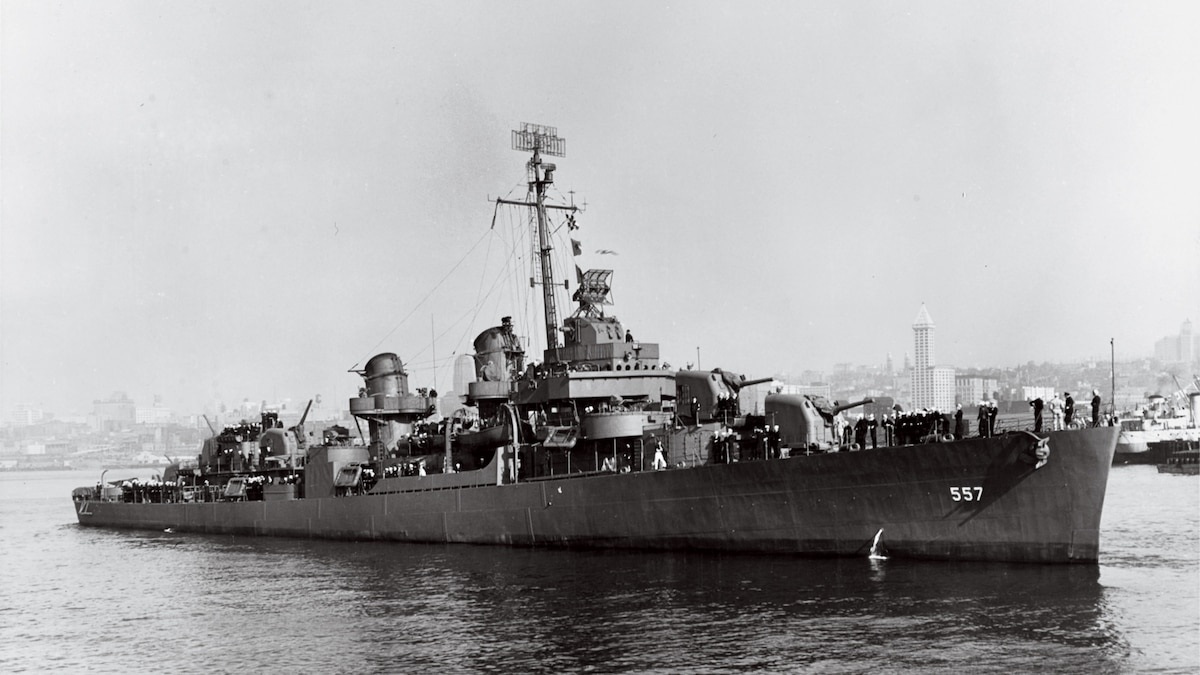Now Reading: The Crew Behind Victory in WWII’s Largest Naval Battle
-
01
The Crew Behind Victory in WWII’s Largest Naval Battle
The Crew Behind Victory in WWII’s Largest Naval Battle

Quick Summary
- On October 25, 1944, during the Battle off Samar in WWII near the Philippine island of Leyte, an outnumbered U.S. navy task unit known as Taffy 3 faced a much larger japanese naval fleet.
- Despite overwhelming odds, Taffy 3 launched aggressive attacks with carrier planes and destroyers, causing significant Japanese losses (three cruisers sunk and a fourth damaged). The japanese ultimately retreated.
- The U.S.S. Johnston played a critical role despite being heavily outgunned and was lost in action alongside most of its crew; only 141 of the shipS 327 men survived.
- Cmdr. Ernest Evans of the Johnston became the first Native American to receive the Medal of Honor posthumously for his extraordinary leadership under fire.
- The Battle off Samar was part of the larger Battle of Leyte Gulf-the largest naval battle in WWII-which resulted in comprehensive Allied victory and effectively neutralized Japan’s Imperial Navy as a fighting force.
- In March 2021, Victor Vescovo’s deep-sea submersible located the wreckage of U.S.S. Johnston at a depth of over four miles (21,180 feet), making it one of history’s deepest wrecks found at that time.
images Included:
- Map showing location related to U.S.S. Johnston shipwreck (LoneWolfMediaUSSJohnston.jpg”>link).
Indian Opinion Analysis
The courage displayed during WWII’s Battle off Samar is both inspiring and historically significant due to its David-vs-Goliath nature-a lesson that strategic ingenuity can overcome numeric disadvantage even under extreme pressure. For India, challenges such as resource limitations are often offset by resilience and innovation-qualities seen within much military history globally.
Furthermore, locating storied shipwrecks like those in Samar demonstrates advancements not just in technology but also humanity’s collective effort toward preserving wartime heritage for future generations through science-driven exploration projects like Victor Vescovo’s mission.
From an Indian viewpoint on geopolitics surrounding maritime domains-modern tensions over South China Sea reinforce sovereignty parallels conserving maritime-cultural records contributes indirectly symbolizing national soft power rhetoric demonstrating archeological regions move forward rehabilitating narratives restoration-based collaborations separating past precursor template guarding global peace stabilitiy learnings teamwork tactful below framework-expansions alignments underscore multilateral cooperations progress values..

























